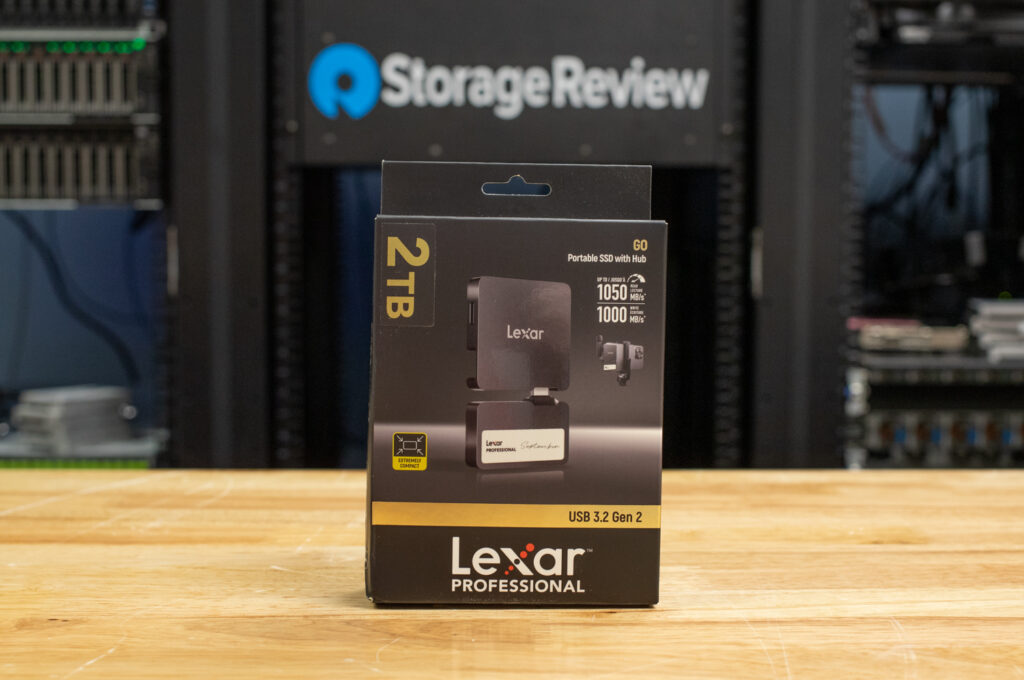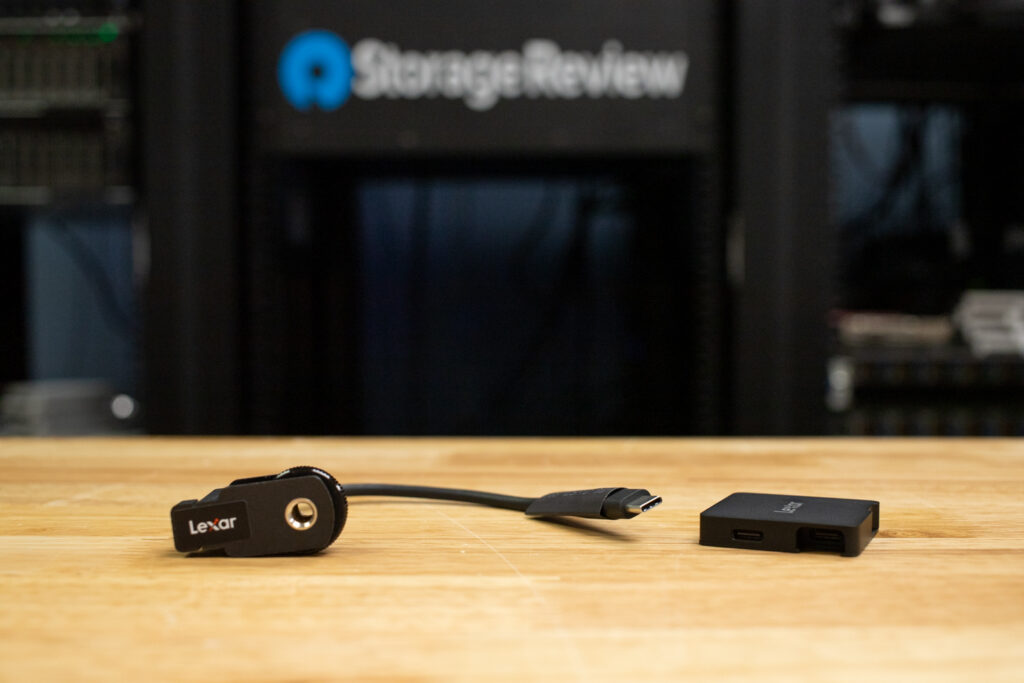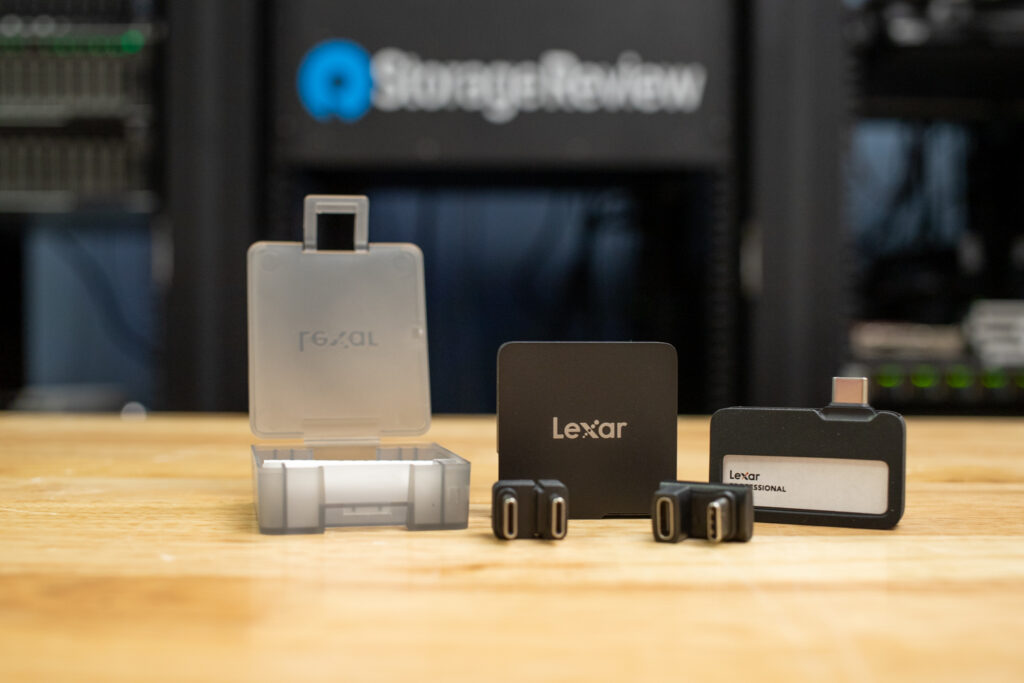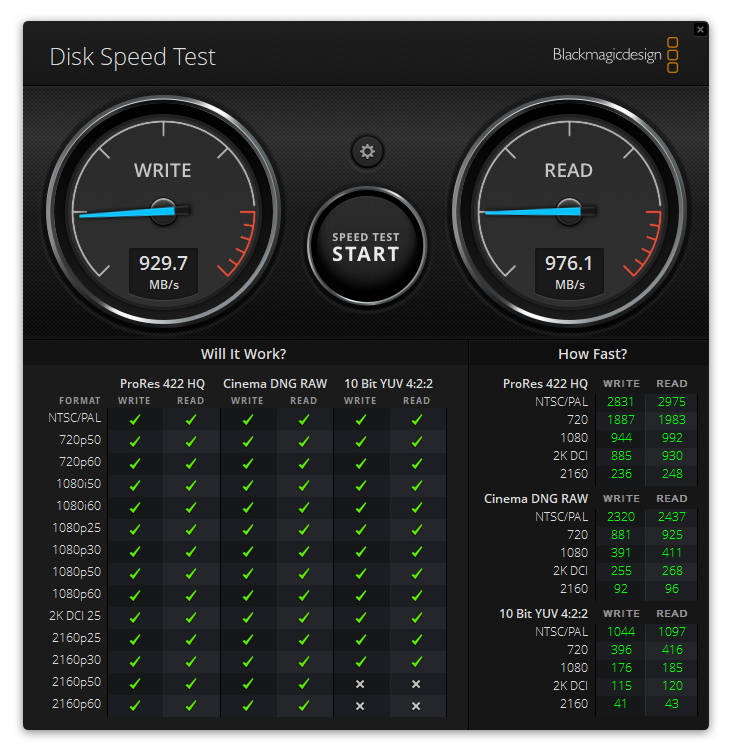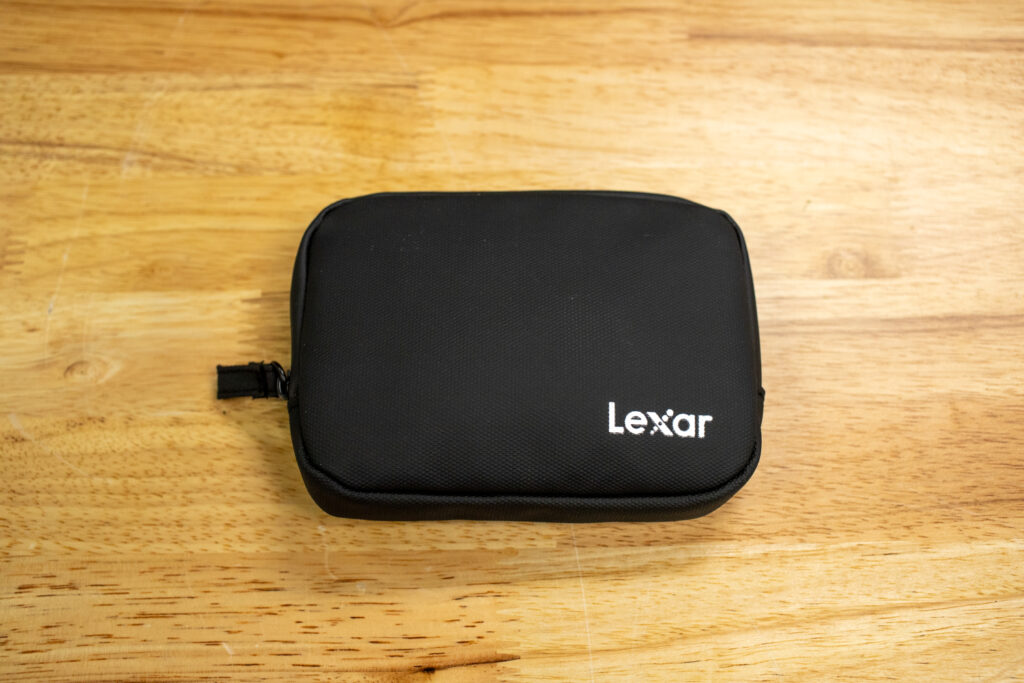Lexar Professional Go Portable SSD with Hub – A compact storage and connectivity solution for creators, enabling fast transfers and seamless workflows on the go.
The Lexar Professional Go Portable SSD with Hub is a compact, high-speed storage solution built for mobile creators needing extra storage and expanded connectivity without the hassle of added cables. Unlike traditional external SSDs, it clips directly onto a smartphone, making it easier to store and manage high-resolution photos and videos on the go. With its integrated hub featuring four USB-C ports, users can connect essential accessories like microphones, lights, and power banks, creating a versatile setup for content creators and professionals working in the field.
The Lexar Go benefits iPhone 15/16 Pro and Pro Max users, as it supports direct 4K 60FPS ProRes recording, reducing reliance on internal storage for large video files. That said, it’s not limited to Apple devices—it also works with Android phones, tablets, laptops, and other USB-C-enabled hardware, making it a versatile option for various workflows.
The included hub expands its capabilities by allowing users to connect microphones, lighting, power banks, or additional storage devices, effectively turning a smartphone into a compact production setup. These features make it particularly useful for vloggers, social media influencers, and professionals who need a portable, all-in-one solution for content creation.
Performance-wise, the Lexar Professional Go Portable SSD relies on USB 3.2 Gen 2, so its speeds will be noticeably lower than the recently reviewed Lexar SL500, which benefits from the faster Gen 2×2 interface. It offers up to 1,050MB/s read and 1,000MB/s write, which is still fast enough for smooth, uninterrupted recording of high-bitrate ProRes footage without dropped frames. This means photographers can quickly back up large RAW image files, while video editors will appreciate the ability to work directly from the drive without significant slowdowns. The hub supports transfer speeds up to 10Gbps, making offloading and managing large media files across multiple devices easier.
The Lexar Professional Go is built to handle the rigors of mobile content creation. Its IP65 rating means it’s resistant to dust and water, making it a reliable choice for outdoor shoots and travel. It’s drop-resistant up to 1 meter, offering peace of mind against accidental bumps. The included silicone case adds an extra layer of protection, helping keep the SSD safe even in rougher conditions.
Backed by a limited 5-year warranty, the Lexar Professional Go SSD costs roughly $169.99 (1TB) and $249.99 (2TB) at Amazon (affiliate link). For this review, we will be looking at the 2TB model.
Lexar Professional Go with Hub Specifications
| Specification | Details |
| Capacity | 2TB | 1TB |
| Performance | Portable SSD: Up to 1050MB/s read, 1000MB/s write Portable Hub: Up to 10Gbps |
| Interface Protocol | USB 3.2 Gen 2 |
| Hub Interface | 4 USB Type-C connectors |
| Power Supply (Hub) | Up to 30W |
| Color | Silver, Black |
| Ingress Protection Rating | IP65 dust- and water-resistant |
| Drop Resistance | Up to 1 meter |
| Operating Temperature | Portable SSD: 0°C to 50°C (32°F to 122°F) Hub: -10℃ to 50°C (14°F to 122°F) |
| Storage Temperature | Portable SSD: -40°C to 85°C (-40°F to 185°F) Hub: -20°C to 70°C (-4°F to 158°F) |
| Supported Systems | Mac OSX 10.6+, Windows 11/10/7/8, iOS, Android 4.4+ |
| Compatible Devices | iPhone 15 Series or above, Smartphones, PCs, Macs, Tablets, iPads, Cameras, and more |
| Dimensions (L x W x H) | 1.71” x 0.98” x 0.32” (43.5mm x 25mm x 8.2mm) |
| Weight | 13g (Portable SSD only) |
Lexar Professional Go with Hub Design and Build
At 1.71″ x 0.98″ x 0.32″ and just 13 grams, the Lexar Go SSD is impressively compact, making it easy to carry and clip onto a smartphone. The included adapters (male-to-male, male-to-female, and a cold shoe adapter cable) provide additional mounting options, making it more flexible for different setups.
As indicated above, the hub offers four USB-C ports for connecting microphones, lights, power banks, or additional storage. This makes it an attractive option for vloggers, social media creators, and mobile filmmakers who want a streamlined way to connect all their essential gear without needing multiple adapters.
However, there is a concern with the hub design. Since it connects via USB-C with no locking mechanism, it doesn’t feel very secure, especially on thicker phone cases, meaning some users may need to remove their case for a proper fit. That said, when mounted on a tripod with the hub attached and a USB-C cable, the setup feels much more stable for filming and live-streaming.
Lexar Professional Go with Hub Performance
We will benchmark the Lexar Professional Go Portable SSD against the Seagate Game Drive and the recently reviewed Lexar SL500 for performance comparisons. However, it’s important to note that these drives serve different use cases.
From a technical standpoint, the Seagate Game Drive and the Lexar Professional Go both use the older USB 3.2 Gen 2×1 interface, which is limited to 10Gbps speeds. Meanwhile, the Lexar SL500 uses USB 3.2 Gen 2×2, allowing higher performance and faster data transfers. While the SL500 is noticeably faster, we are including it in the comparison to highlight the real-world performance differences between these interfaces.
BlackMagic Disk Speed Test
First up is the usual BlackMagic Disk Speed test, which gauges the real-world performance of SSDs.
The Lexar Professional Go Portable SSD recorded 929.7MB/s write, and 976.1MB/s read, performing within the expected range for a USB 3.2 Gen 2 drive. While it falls well behind the Lexar SL500, which leverages the faster Gen 2×2 interface for 1,633.9MB/s write and 1,780.1MB/s read, the Lexar Go still offers solid speeds for its class.
Compared to the Seagate Game Drive, the Lexar Go shows a trade-off between read and write performance—it is slightly slower in write speeds but edges ahead in read performance (976.1MB/s vs. 924.5MB/s). This means data retrieval is faster, which can benefit specific workflows.
| Disk Speed Test | Lexar Professional Go | Seagate Game Drive | Lexar SL500 |
| Write | 929.7MB/s | 979.6MB/s | 1,633.9MB/s |
| Read | 976.1MB/s | 924.5MB/s | 1,780.1MB/s |
IOMeter 1 Thread
The next test is the Single-Threaded IOMeter test, which examines sequential and random read/write performance under a lighter load. The speeds here will be close to those in the BlackMagic test on the Sequential 2MB read and write portions, but we should see some differences in the 4-threaded portion.
The Lexar Professional Go Portable SSD hit 861.97MB/s sequential write and 962.51MB/s sequential read. Though noticeably slower in write activity, its read performance closely aligns with its BlackMagic Disk Speed Test results. The Lexar SL500’s 1,427.0MB/s write, and 1,705.97MB/s read to demonstrate the benefit of the faster Gen 2×2 interface.
Compared to the Seagate Game Drive, the Lexar Go trails slightly in sequential write performance but pulls ahead in sequential read speeds (962.51MB/s vs. 850.50MB/s. However, the Seagate drive performs much better across the board in random workloads, especially in 4K random read and write, where it leads with 7,964 IOPS and 18,762 IOPS, respectively.
| IOMeter (1 Thread) | Lexar Professional Go | Seagate Game Drive | Lexar SL500 |
| Seq 2MB Write | 861.97MB/s | 871.71MB/s | 1427.0MB/s |
| Seq 2MB Read | 962.51MB/s | 850.50MB/s | 1705.97MB/s |
| Random 2MB Write | 700.75MB/s | 869.63MB/s | 1320.19MB/s |
| Random 2MB Read | 645.95MB/s | 848.52MB/s | 1336.21MB/s |
| Random 4K Write | 15,142 IOPS | 18,762 IOPS | 23,181 IOPS |
| Random 4K Read | 4,049 IOPS | 7,964 IOPS | 4,901 IOPS |
IOMeter 4 Thread
The IOMeter 4-thread test provides a better look at how the Lexar Professional Go Portable SSD handles multitasking and heavier workloads. Compared to its single-threaded results, it performed slightly better in sequential workloads, reaching 984.48MB/s write, and 1,042.16MB/s read, aligning more closely with its advertised speeds.
However, the Lexar Go struggled against the Seagate Game Drive in random performance, particularly in random 2MB write, where it posted 752.78MB/s—considerably lower than Seagate’s 1,042.08MB/s. While its random 2MB read performance improved to 833.42MB/s, it still lagged behind the Seagate’s 964.82MB/s. The most significant gap appeared in 4K random performance, where the Lexar Go managed 54,378 IOPS write and 11,859 IOPS read. At the same time, the Seagate Game Drive significantly outperformed it, especially in write workloads.
Again, the SL500’s 1,806MB/s sequential write and 1,997.36MB/s sequential read results highlight the performance trade-offs of using a Gen 2×1 interface.
| IOMeter (4 Thread) | Lexar Professional Go | Seagate Game Drive | Lexar SL500 |
| Seq 2MB Write | 984.48MB/s | 1,042.49MB/s | 1,806.0MB/s |
| Seq 2MB Read | 1,042.16MB/s | 974.60MB/s | 1,997.36MB/s |
| Random 2MB Write | 752.78MB/s | 1,042.08MB/s | 1,643.2MB/s |
| Random 2MB Read | 833.42MB/s | 964.82MB/s | 1,693.18MB/s |
| Random 4K Write | 54,378 IOPS | 79,461 IOPS | 72,622 IOPS |
| Random 4K Read | 11,859 IOPS | 35,649 IOPS | 15,623 IOPS |
Conclusion
The Lexar Professional Go Portable SSD with Hub is a clever solution for mobile content creators who need fast storage and extra connectivity without the bulk. Weighing just 13 grams and IP65-rated for dust and water resistance, it’s built for on-the-go shooting, whether vlogging on the street or capturing footage in rougher conditions.
The physical setup of the Lexar Professional Go is a mixed bag—compact and lightweight, but not without its limitations. Clipping directly onto a smartphone keeps things streamlined, making it great for on-the-go creators who want a clean, cable-free setup. However, the lack of a locking mechanism is a bit of a letdown, as the SSD doesn’t always feel entirely secure, especially with thicker phone cases. It’s a design choice that makes sense for quick attachment and removal, but it could be frustrating if the drive shifts or gets loose mid-use.
Performance-wise, the Lexar Go delivers solid speeds within its USB 3.2 Gen 2 limitations, reaching close to 1,000MB/s read and write in our Disk Speed test. It excels in sequential workloads, making it a strong choice for 4K ProRes recording and large file transfers. Small-block transfer speeds are a bit slower than physically larger SSDs, although it’s a tradeoff of the compact design. If you’re a content creator who values the Lexar Go’s unique hub functionality, this trade-off in raw performance is likely a non-issue.
Overall, the Lexar Go is a compelling choice for mobile creators who need storage and connectivity in a single, compact package. iPhone 15/16 Pro users shooting ProRes video directly to an external drive will especially appreciate its seamless workflow integration. The portability and integrated hub make it a versatile tool for on-the-go content creation, allowing users to connect essential accessories without the hassle of multiple adapters.
Lexar Professional Go Portable SSD at Amazon (affiliate link)
Engage with StorageReview
Newsletter | YouTube | Podcast iTunes/Spotify | Instagram | Twitter | TikTok | RSS Feed

